Women may serve in close combat roles by 2016, says Fallon
- Published
- comments
Defence Secretary Michael Fallon: "There should not be any bar to serving in the armed forces on the basis of gender"
Women may be allowed to fight in front line combat roles for the first time - pending a further review by the Ministry of Defence.
A government-commissioned report, external on the ban on women serving in close combat roles called for more research to assess the physical demands involved.
Defence Secretary Michael Fallon said armed forces roles "should be determined by ability and not gender".
And he added that he hoped to "open up combat roles to women" in 2016.
Currently women can serve on the front line, but not where the primary aim is to "close with and kill the enemy".
'Just as effective'
This means women are not permitted to serve in the infantry or armoured corps.
Mr Fallon said the report had concluded that allowing women in combat roles would not hinder the ability of the army in battle.
He told BBC's Radio 4: "The review makes clear that there's no question mark over the cohesion of the unit, the overall effectiveness of the unit. Women can fight just as effectively as men."
However, the review said that a decision to lift the exclusion now "could be perceived as reckless" and called for further research into the "physiological demands" placed on those in close combat roles.
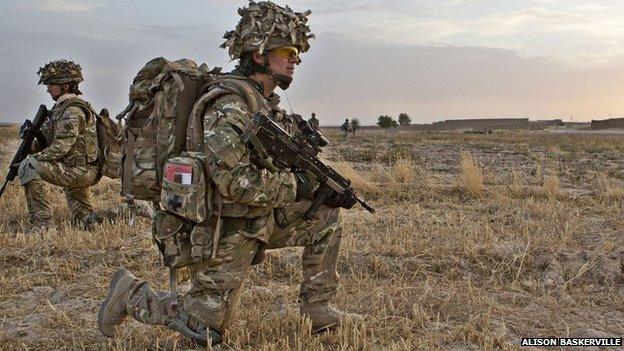
British women have already served in places like Afghanistan, in support roles
Mr Fallon has ordered an 18-month review of training procedures and the physical demands of fighting to ensure the change can be made without damaging female soldiers' health.
Initial findings are expected in 2016.
"I hope that, following further work on our training regimes and equipment, we can open up combat roles to women in 2016," Mr Fallon said.
BBC defence correspondent Jonathan Beale said military sources have told the BBC there is now a "real desire" among ministers to end the restrictions.
Kevan Jones, Labour's shadow armed forces minister, welcomed the move.

Analysis: Jonathan Beale, BBC defence correspondent
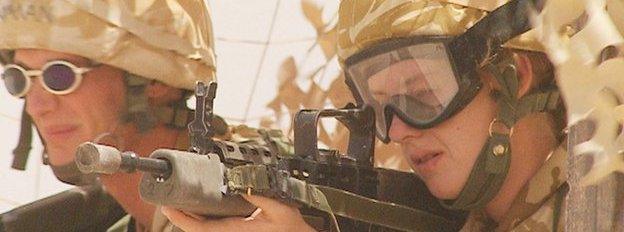
This is a signal of intent, but not a done deal.
The fact that the review did not lift the ban on women serving in close combat roles shows there are still issues to be resolved - most importantly, how will a woman's body stand up to the huge physical demands of being an infantry soldier?
Those against lifting the ban will also be worried that standards will be weakened for women. Defence Secretary Michael Fallon has talked of the need to "improve" training if the infantry is opened up to women. What exactly does that mean?
With so many allies, including the US, now allowing women to carry out close combat roles, it will be increasingly hard for the British Armed Forces to keep the ban in place. Times have changed and there is political pressure for the Army to change too.
But in reality even in those countries that have lifted the ban, women are still in a significant minority. Few may want to join the infantry and even fewer are likely to meet the physical demands.

To join an infantry unit at recruitment level, men have to complete run of 1.5 miles in 12 minutes 45 seconds.
They then have to complete an annual fitness assessment which involves carrying 25kg, plus a rifle and helmet, over a distance of just under eight miles in two hours, the MoD said.
Col Mike Dewar, a military historian who served in Cyprus, Borneo and Northern Ireland, told the BBC the "battle fitness test" also required the infantry to "pick up another man, with his rifle and equipment, and carry him in a fireman's lift 200 metres."
He said upper body strength in "99.9% of women" would make it "virtually impossible" to pass the tests.

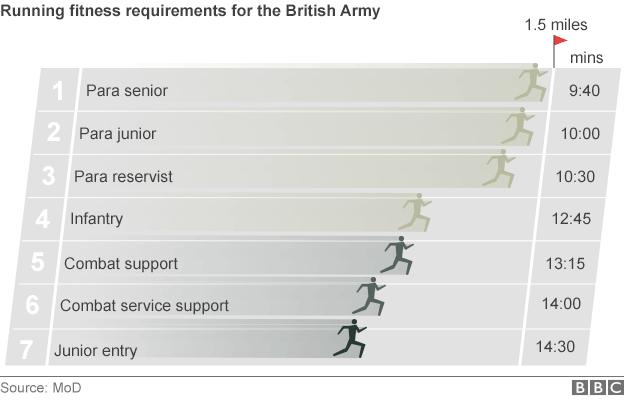
Fitness standards: full MoD list., external

Maj Judith Webb, the first woman to command an all-male field force squadron in the Army, said women are "physically different" to men. The presence of weaker soldiers over an extended period "could create an effect on our combat effectiveness," she added.
But Brig Nicky Moffat, until recently the most senior female officer serving in the Army, has described caution as "sexism dressed up as concern".
And Dr Christine Cheng, who lectures in war studies at King's College London, said women in combat roles had been good for armed forces in other countries.
Countries who currently allow women to participate in close combat roles include the United States, Canada, Denmark and New Zealand.
Former army officer Ashley Merry: ""Would I want to be serving alongside women who wanted to be in face-to-face combat?"
Maj Gen Patrick Cordingley, a former commander of the 7th Armoured Brigade - known as the Desert Rats, said the move would be a "mistake".
He added: "The practicalities of women in the infantry and armoured corps are considerable and should not be overlooked."
A defence source told the BBC the wellbeing of British personnel is of the utmost importance.
British regular forces
All services
160,650
-
Includes 15,920 women
-
Navy
3,000 (9%)
-
Army
8,010 (9%)
-
Royal Air Force
4,910 (14%)
Women by service
- Published19 December 2014
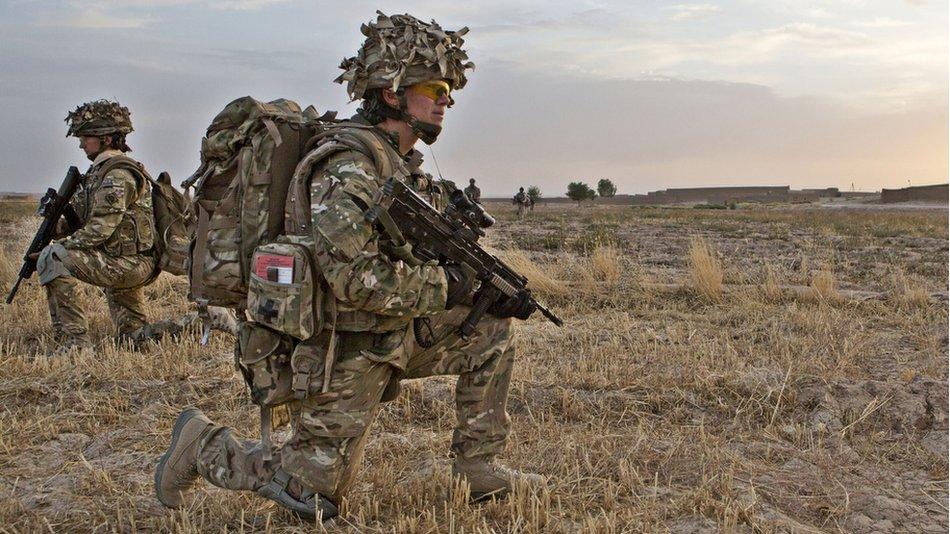
- Published8 May 2014
- Published5 May 2014
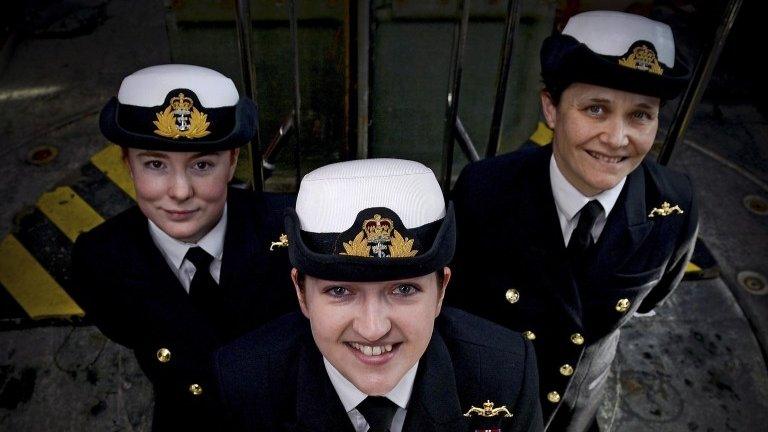
- Published19 December 2014
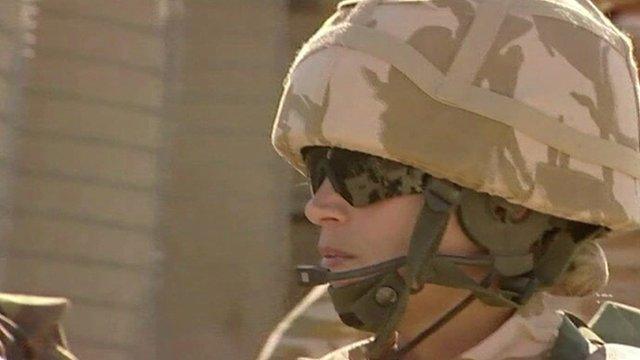
- Published19 December 2014

- Published19 December 2014
